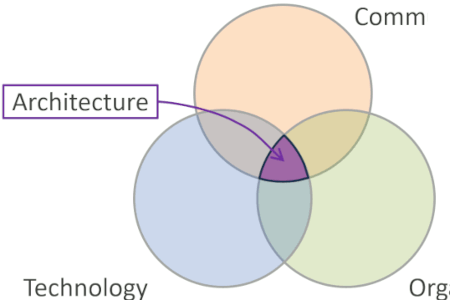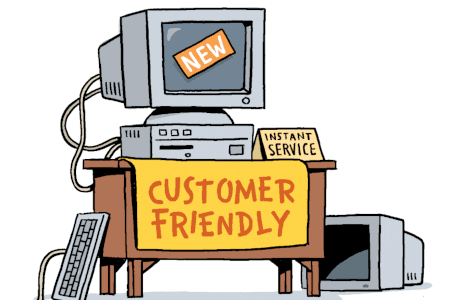Updated: Category: Architecture
This post is the final part of a mini-series titled “Think Like An Architect”. If you like to start from the beginning, here’s Part 1: Famous Architects Sketch
The great thing about having lived and made friends in different countries is realizing that language is so much more than just vocabulary. For one, there are words that are difficult to translate. A German word that’s been adopted into other languages due to lack of a suitable translation is Schadenfreude, which roughly means taking pleasure in others’ misfortune (apparently the matching “English” word epicaricacy exists but is so rare that most people will have never seen it). Hopefully any negative image implied by that word is more than compensated by the all-around happy word Kindergarten.
Beyond just single words, you are bound to encounter whole phrases or idioms that also don’t translate easily. While living in Japan I stumbled on the phrase 弘法筆を選ばず, which roughly translates into “the master doesn’t pick the brush” (弘法, Kōbō, doesn’t directly translate into “master” but appears to derive from Kōbō-Daishi, a very famous Japanese calligrapher and monk, so the father of all great writers if you wish).
When I first heard the saying, I couldn’t get the meaning until a Japanese friend explained it: a true master doesn’t rely on the tool and can create great writing with most any brush. Or more bluntly: don’t blame the tool for your ineptitude. If you’re a poor cook, buying a better knife won’t help, to quote myself from Cloud Strategy.
True Architects Aren’t Obsessed with Tools
Returning from our linguistic detour back to architecture, the great architects I know rarely obsess with specific tools. Sure, they marvel at globally distributed transactional databases, stream-based pub-sub systems, and web servers handling many concurrent requests in a single thread. But the folks whose sentences appear to consist to 60% of buzzwords and product names are rarely the ones who spend much time thinking about decisions and trade-offs.
I have seen plenty debates on drawing tools with people loving or hating specific products. The extreme case was a team of developers justifying setting up a separate wireless network so they could use their favorite on-line drawing tool instead of PowerPoint. In their mind it was an acceptable trade-off that this led to no one else being able to access their documentation because this network wasn’t reachable from standard laptops. I would be hard pressed to believe that their diagrams were much improved due to the choice of tool. My experience is that 90% of architecture diagrams aren’t sure which question they want to answer and hence become rather useless anyway. The subtlety of box shading is unlikely to change that.
Most platforms and tools these days have matured to the point where the choice of tool is unlikely to be the biggest predictor of your project’s success or failure. Relational databases come to mind.
Tools of the Trade
Of course IT folks don’t just use tools for the systems they design and build, but also need personal productivity tools, such as laptops, smart phones, monitors, and so on. I can understand that people want to choose the tools they use every day carefully, but I have also been rather unfussed over most of my equipment.
I am typing this post on a hand-me-down Logitech K120 keyboard (the ones on the bottom of the shelf for $14.99 with USB-A cable) with broken stands (it rests on my laptop) and an HP wired mouse that must have lived through a lot of IT excitement (I am grateful to my coworker Sev who dropped these off for me during quarantine). And my good old Galaxy S7 phone is still by my side.
I have been ridiculed a fair bit for using a Panasonic Let’s Note laptop that “looks like from the 80ies” and still features a VGA connector (in addition to USB-A, USB-C, HDMI, SD Card, and Ethernet connectors - you’ll never see me with an accessory pouch). These laptops also have a 20 hour battery life but they don’t look quite as cool as a MacBook, except when the latter runs out of battery. Whether the type of laptop you carry makes you look cool has been the subject of some debate. I am skeptical.
Some Brushes I Pick
There are a few tools that I do cherish, though. Poor eyesight coupled with the tendency to open many windows (editor, browser, git bash, local web server, chat) makes a big screen a big productivity booster for me. On the other hand I don’t need an ultra-ultra-wide monitor to hide behind as I am answering e-mails.
Also, for my life’s worth I can’t type well on keyboards with giant CAPS LOCK keys, which I hardly ever use (it seems I am not alone). Lastly on the perennial vim vs emacs debate I am firmly in “camp vim” and will take IntelliJ IDEA over Eclipse any day.
Judging by the Tools
So, the old saying that you can judge a trades(wo)man by his or her tools might not fully apply to IT. What’s between our ears matters more than what our fingers rest on. Again, there’s one exception: I do have a habit of judging architects by their bookshelf. For one, I am always on the lookout for titles that I haven’t come across. Also, what books an architect reads often indicates of their way of thinking. And of course I am always happy to spot The Software Architect Elevator anywhere.
Yoda does not choose the lightsaber
If you are trying to explain why you don’t choose the brush to the younger generation, you might resort to my friend Yuji’s translation: “Yoda does not choose the lightsaber”; and all the evil guys with those extra special sabers fail in the end. It’s good to be Yoda.
As a handy reference, here the prior posts in this mini series:
- Famous Architects Sketch
- Architects See More Dimensions
- Architects Look for Causality
- Architects See Shades of Gray, Look for Balance
- Architects Zoom In and Out, See Different Things
- The Master Doesn’t Choose the Brush




